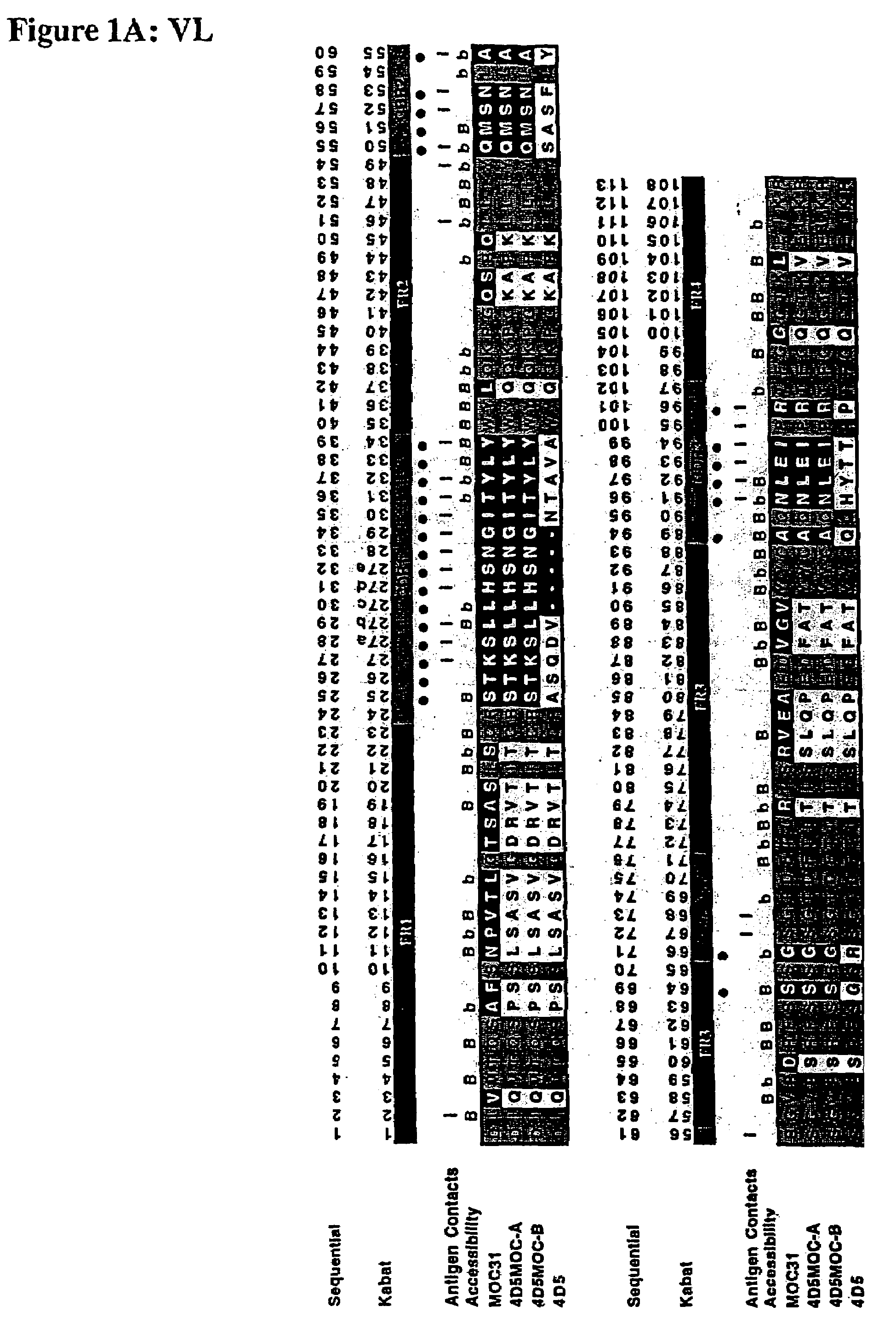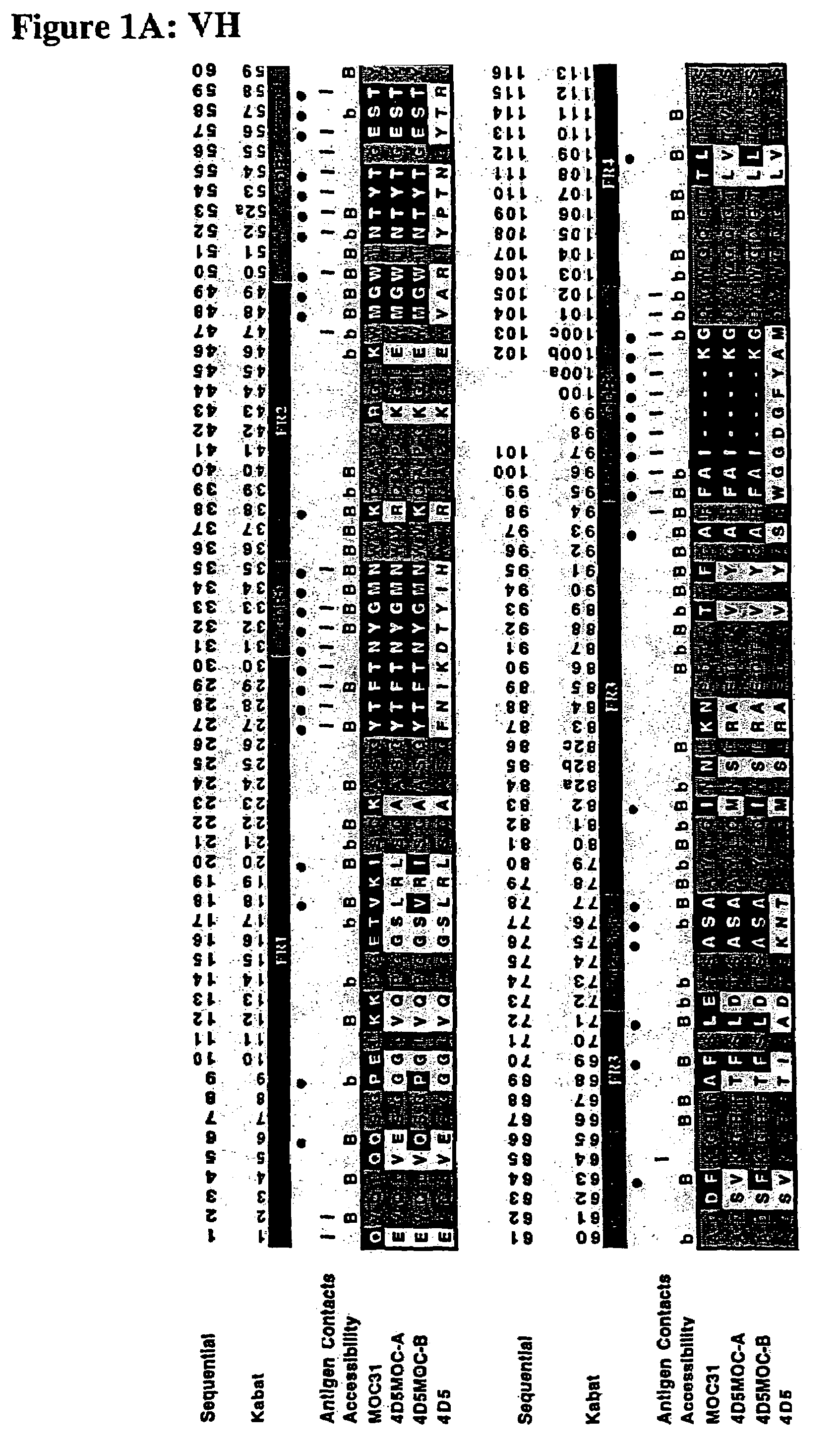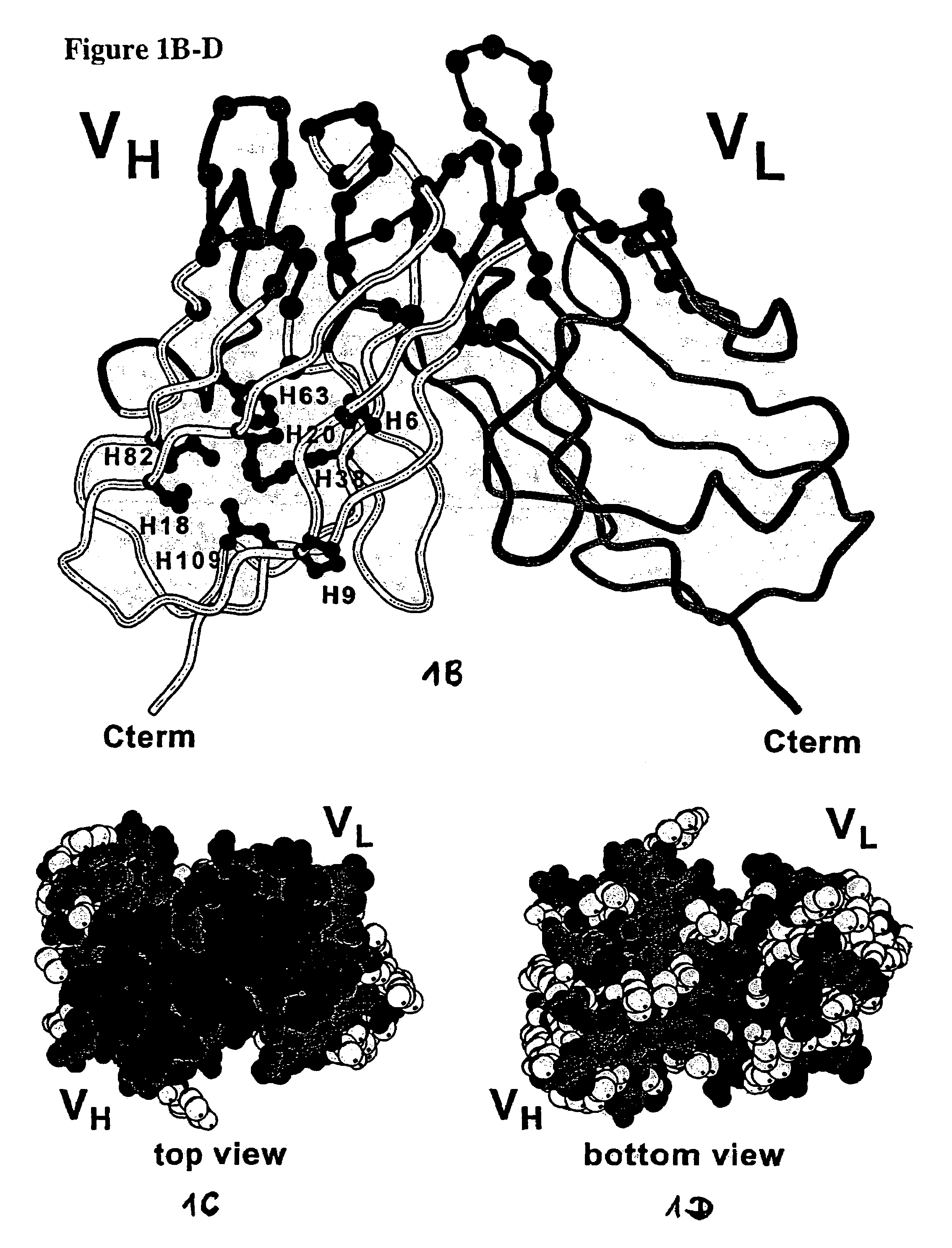Method for the stabilization of chimeric immunoglobulins or immunoglobulin fragments, and stabilized anti-EGP-2 scFv fragment
a technology of immunoglobulin and stabilization method, which is applied in the direction of immunoglobulins against animals/humans, peptides, drug compositions, etc., can solve the problems of limited actual production level, limited strategy, and only a few factors influencing antibody expression levels
- Summary
- Abstract
- Description
- Claims
- Application Information
AI Technical Summary
Benefits of technology
Problems solved by technology
Method used
Image
Examples
example
Material and Methods
Mammalian Cell Lines
[0076]The human small cell lung carcinoma cell line SW2, kindly provided by Dr. S. D. Bemal (Dana Farber Cancer Institute, Boston, Mass., USA) and breast cancer cell line SK-BR-3 (#HTB 30, American type culture collection, Rockville, Md.) were maintained in RPMI 1640 (Hydone, Europe. Ltd.) based medium supplemented with 10% fetal calf serum (Gibco, Grand Island, N.Y.) and grown at 37° C. under an atmosphere of 5% CO2. The breast cancer cell line SK-OV-3, (#HT 77, American type culture collection, Rockville, Md.) was grown in RPMI 1640, supplemented, with EGF (10 ng / ml) and insulin (5 ng / ml).
Epithelial Glycoprotein-2 (EGP-2) and Single-Chain Fv Fragments
[0077]The human epithelial glycoprotein-2was produced as a recombinant soluble protein (M1-F259) with an six-histidine C-terminal tag by use of the expression vector pBB4 / GA-733-2 in the baculovirus expression system (Invitrogen). The anti-EGP-2scFv fragment (scFv MOC31) was assembled from mRNA ...
PUM
 Login to View More
Login to View More Abstract
Description
Claims
Application Information
 Login to View More
Login to View More - R&D
- Intellectual Property
- Life Sciences
- Materials
- Tech Scout
- Unparalleled Data Quality
- Higher Quality Content
- 60% Fewer Hallucinations
Browse by: Latest US Patents, China's latest patents, Technical Efficacy Thesaurus, Application Domain, Technology Topic, Popular Technical Reports.
© 2025 PatSnap. All rights reserved.Legal|Privacy policy|Modern Slavery Act Transparency Statement|Sitemap|About US| Contact US: help@patsnap.com



